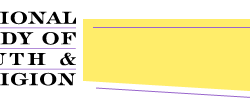|
The Influences of Geographic Region on Adolescent Church Attendance and Youth Group Participation View printer-friendly version [PDF] The region of the U.S. a person grows up in tends to influence adolescent church attendance and youth group participation. Southern youth are most involved in organized religion, followed by youth in the Midwest and West. Adolescents residing in the Northeast participate in religion the least, although they are not the most likely to report having no religion. Young people living in the South are the most likely to attend religious services weekly and least likely to never attend. By contrast, American adolescents who reside in the Northeast are the least likely to attend church weekly. Those in the West are the most likely never to attend church. Even so, more than a third of youth are attending church weekly, no matter what their region. Youth in the North Central and Western states follow the South in both church attendance and youth group involvement, with 32 percent of Southern youth and 26 percent of Western young people participating in youth group 4 or more years. Across all regions except the Northeast, more than 50 percent of youth participate in youth group at some point. These results, from the Monitoring the Future survey, a nationally representative survey of American 8th, 10th and 12th grade students, concur with research on the religiosity of American adults. Southern culture is generally much more friendly to religion than other non-Southern cultures in the United States. Moreover, the South is dominated denominationally by Baptists, whose youth are among those with the highest levels of church attendance and youth group participation. Not only does Northeast culture tend to be relatively more secular than many other regions of the country, but the dominant religion of the Northeast is Catholicism, which is associated with lower levels of youth church attendance and religious youth group participation. This preliminary analysis is designed to provide baseline information that will aid in the development of a comprehensive survey of adolescents for the National Study of Youth and Religion, a four-year research project being conducted at the University of North Carolina, Chapel Hill under the direction of Dr. Christian Smith. Funded by Lilly Endowment, Inc., this project is designed to enhance our understanding of the religious and spiritual lives of American adolescents. Analysis of data was completed by Christian Smith, Melinda Lundquist Denton, and Rober Faris. Christian Smith is Professor and Associate Chair of Sociology at the University of North Carolina, Chapel Hill. Melinda Lundquist Denton and Robert Faris are Ph.D. graduate students in sociology at the University of North Carolina, Chapel Hill. The Monitoring the Future (MTF) survey is a nationally representative survey of American high school students, administered to 8th, 10th and 12th graders since 1975. By design, MTF data does not include school dropouts and home-schooled youth. The MTF survey includes the following religion questions analyzed here: 1) "How often do you attend religious services?" and 2) "During how many years (if any) have you participated in church youth groups?" Johnston, Lloyd D., Jerald G. Bachman, Patrick M. O'Malley, and John Schulenberg. MONITORING THE FUTURE: A CONTINUING STUDY OF AMERICAN YOUTH (8th- 10th- AND 12TH- GRADE SURVEYS), 1996 [Computer file]. Conducted by University of Michigan, Survey Research Center. ICPSR ed. Ann Arbor, MI: Inter-university Consortium for Political and Social Research producer and distributor, 1999. The original collector of the data, ICPSR, and the relevant funding agency bear no responsibility for use of the data or for interpretations or inferences based upon such uses. 4-1-02 |



